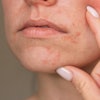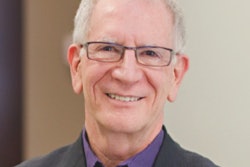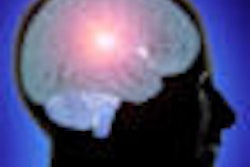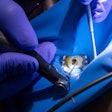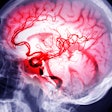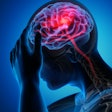
Evidence-based dentistry is not a new concept. But over the years it has more often been associated with general dentists and specialists than the rest of the dental team.
With the advent of lightning-quick access to information and the growing emphasis on preventive care and the oral-systemic link, however, hygienists and dental assistants are being called upon to adopt evidence-based decision-making into their daily clinical practice as well.
"What we are hearing and seeing is more of a demand for there to be science behind the products we recommend to our patients," said Lynn Ramer, L.D.H., president of the American Dental Hygienists' Association (ADHA). "We want to know that what we are recommending really works. And I think consumers are savvier and more informed these days, with all the information available out there on the oral-systemic link."
In fact, in a survey of 300 hygienists conducted last fall by the Lanmark Group, 93% of respondents (227 out of 243) said that the best way for them to accept a new product or service is to show them the clinical science and relevance behind it.
Asking the right questions
What exactly is evidence-based medicine? It is generally defined as "the integration of best research evidence with clinical expertise and patient values." The ADA defines evidence-based dentistry as "an approach to oral healthcare that requires the judicious integration of systematic assessments of clinically relevant scientific evidence, relating to patient's oral and medical condition and history, with the dentists' clinical expertise and the patient's treatment needs and preferences."
But when it comes to clinical practice, what exactly does that mean, and how do you go about implementing it?
“We want to know that what we are recommending really works.”
— Lynn Ramer, L.D.H., president,
American Dental Hygienists'
Association
"You have to stay on top of the research that is coming out so you know what choices to make for your patients and where to guide them so that they can help themselves," Ramer said. "It isn't one size fits all. We should be using our own evidence-based research to make decisions in the best interest of the patient."
Knowing what constitutes good research and how to ask the right questions is a key starting point, said Jane Forrest, R.D.H., Ed.D., chair of the division of health promotion and disease prevention and epidemiology at the University of Southern California (USC) School of Dentistry. She teaches research to dental hygiene students and has centered her curriculum around evidence-based decision-making.
"These days patients come in with all kinds of information from the Internet," she said. "Some of it is fine, some of it isn't. So how do you address your patients' concerns? How do you look for good scientific evidence and discuss it with your patients?"
Forrest uses the term "evidence-based decision-making" rather than "evidence-based medicine" because research is only part of it, she said. "Research doesn't make the decision -- the clinician does, using your own experience, judgment, and the patient's situation."
Everyone knows how to use the Internet and Google, but not everyone knows how to find the best clinical evidence, she added.
"The whole evidence-based movement has become possible because we now have electronic databases and computers that hook to those databases," Forrest said. "And think about how many hundreds of dental publications there are. A lot of them are not true peer-reviewed journals, but even taking those out of the mix, there are still hundreds of journals that pertain to what a dentist or hygienist does in practice."
Information hierarchy
The evidence-based decision-making process is built on two fundamental principles, according to Forrest (Journal of Evidence-Based Dental Practice, September 2009, Vol. 9:3, pp. 108-112):
- Evidence alone is never sufficient to make a clinical decision.
- A hierarchy of evidence exists to guide clinical decision-making.
"Evidence-based practice is not just a new term for an old concept," Forrest and her co-author wrote. "As a result, practitioners need more efficient and effective online searching skills to find relevant evidence, and critical appraisal skills to rapidly evaluate the evidence for its validity and applicability."
The first step is to identify the best journals to search. For example, most of the evidence that supports dental hygiene practice is not in the hygiene journals, Forrest noted -- it is in public health journals such as the Journal of the American Dental Association, British Dental Journal, Community Dentistry and Oral Epidemiology, Cochrane Library, Journal of Clinical Periodontology, Caries Research, Journal of Public Health Dentistry, and Journal of Clinical Dentistry.
Next, you need to understand the hierarchy and quality of the studies being published. The highest levels of evidence for treatment questions are the systematic review and meta-analysis. Next come individual randomized controlled trials, followed by cohort studies, case-control studies, and case reports of studies not involving human subjects. Below these are animal studies and, finally, lab-based studies.
"You have to know what a good research study looks like to know what level of information it provides for you," Forrest said. "If I have a patient come in and they have a certain condition that I have never seen before, I need to do some homework. So how do I even phrase a question about this condition to be able to go to the scientific literature to begin to get an answer?"
Say a patient comes in needing a fluoride treatment and asks, "What is the difference between you doing a fluoride varnish or me buying an over-the-counter varnish?" You need to be able to know how to look that up to be able to answer the patient's question in relation to caries prevention and remineralization, she said.
"If I need to know something, what specifically is it I need to know? Because once you identify the question you want to answer, you get the keywords you need to conduct the search," she said.
Connecting the dots
After defining the specific clinical question and conducting a thorough search to find the most current evidence, the next step is to understand the relevance of the data to the patient and the clinical issue, Forrest said. She recommends asking three key questions:
- Are the results of the study valid?
- What are the results?
- Will the results help in caring for my patients?
"The first question focuses your analysis on the research design, methods, and manner in which the study was conducted," Forrest and her co-author wrote in the Journal of Evidence-Based Dental Practice. "Little confidence can be placed in the results if the study was not appropriately conducted, so by answering the first question one can determine whether or not to continue reading that particular article."
Adopting this process into your daily clinical practice will help ensure that you are providing the most appropriate care for your patients, even as the number of published articles and new devices, products, and drugs increases faster than most clinicians can learn on their own, Forrest noted.
And it will only become more important as electronic information becomes increasingly available to clinicians at the point of care, she added.
"This is where medicine is moving: having an electronic patient record that is hooked into a database that can immediately tap into the information," she said. "We're not near that in dentistry yet, but we are going there. So again -- knowing how to conduct a good search becomes really important to being able to find good answers."
Copyright © 2010 DrBicuspid.com


